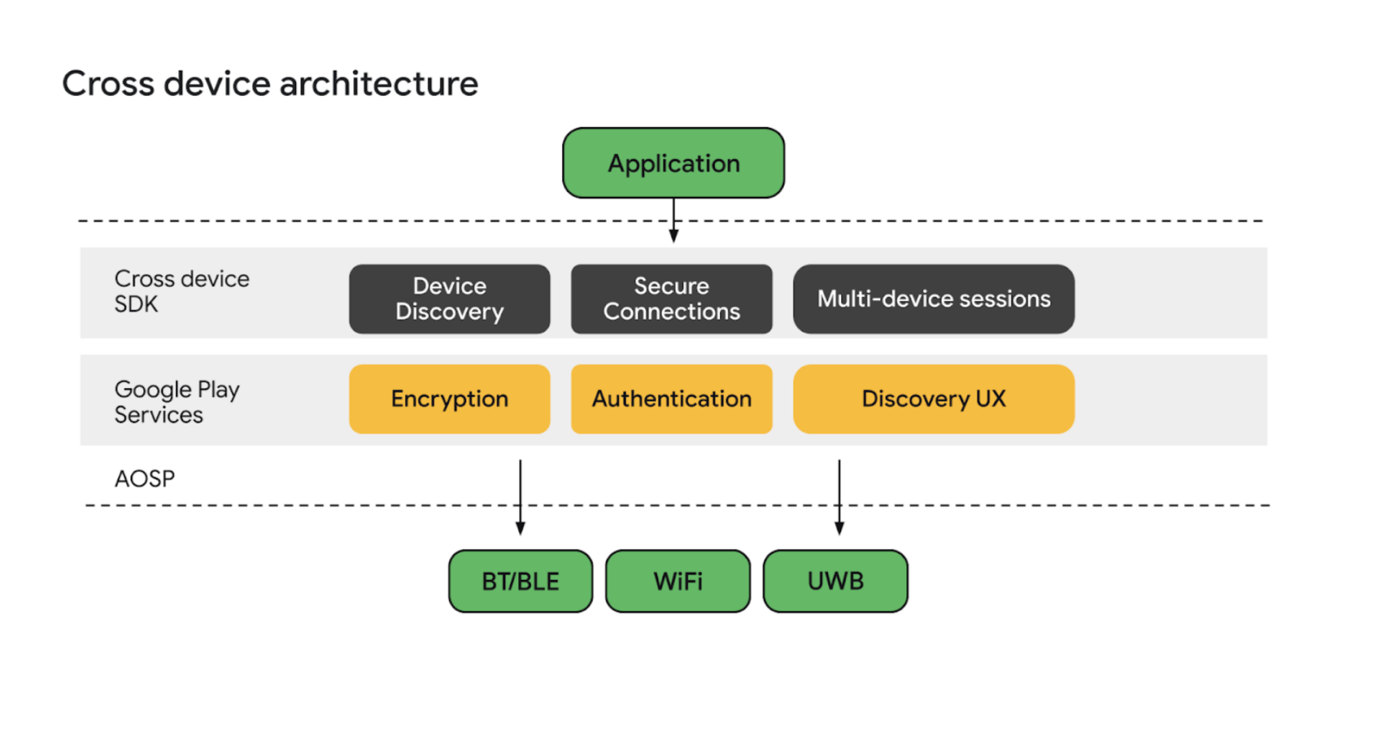Connected Devices: The Fundamental Need
People are using more and more connected devices and as per Google stats, a typical household in the US has 25 devices in 2021 more than a 50% increase from 2019 which was 11 devices per household. While the phone is still the most popular form of connected device, people are adding more connected technologies to their lives like TVs, cars, watches, and more.
With the increasing number of connected devices, there is a need and expectation to better connect those devices and build unique experiences, so all devices work well together.
Multi-Device Development: Google to the rescue
Google is changing the way you create compelling, cross-device experiences. By designing, building, and delivering a core framework and capabilities that enable devices across the Android devices ecosystem to compound each other’s value, so everything works better together.
Do not confuse the multi-device experience with an app being compatible with multi-form factors say phone, tablet, TV, etc. This is more than this and includes building unique experiences so apps can do cross-platform interactions, sign on just one device and share login credentials effortlessly with new device/s.
Multi-device future opens new ways to get more done. Users want to easily set up and move from one device to the next throughout their day, whether it's your phone or your other devices.
Multi-device use cases
Google suggested some use cases, but the opportunities are limitless:
- Complete a movie rental or purchase on your TV by using your phone.
- Start reading a long article on your phone and finish reading it on your tablet without losing your place.
- Share a map location as a passenger directly with your friend’s car.
- Share your Sunday bike route with others that you’re biking with.
- Collect items for a group food order without passing your phone around.
- Take a group vote for the next TV show to watch together.
SDKs available to enhance the experiences:
Android solutions for seamless sign-in across devices: Block Store
Many users still manage their credentials when setting up a new Android device. This manual process can become challenging and often results in a poor user experience. Block Store enables seamless, secure login experiences so users can enjoy your app across devices in less than 30 lines of code. Block store is a token-based sign-in mechanism that is end-to-end encrypted and built on top of the backup and restores infrastructure.
Cross-Device SDK
The Cross-device SDK simplifies the development of rich and engaging multi-device experiences. This SDK is part of a larger multi-device development toolkit that includes emulator support, profiling, and more.
The initial release contains APIs that allow you to easily find nearby devices, start your app on a secondary device, authorize peer-to-peer communication with encrypted, low-latency bi-directional data sharing, and transfer or extend your app’s user experience across devices. The Cross-device SDK enables the following core functionality:
- Device discovery and authorization: Easily find nearby devices, authorize peer-to-peer communication, and start the target application on receiving devices.
- Secure connections and data transfers: Enable encrypted, low-latency bi-directional data sharing between authorized devices.
- Multi-device sessions: Enable transferring or extending an application’s user experience across multiple devices.
Cross-device Architecture
The cross-device SDK provides a higher-level API on top of a number of distinct lower-level APIs, including Bluetooth, Wi-Fi, and Ultra-wideband. To make things easier and more transparent for both developers and users, apps using the Cross-device SDK will not need to request permissions for using the underlying services. Instead, the user will authorize their use when enabling an app to communicate with specific devices.
The Cross-device SDK is a software abstraction layer that enables both platform-driven and developer-driven multi-device experiences by leveraging various wireless technologies such as Bluetooth, Wi-Fi, and ultra-wideband. This abstraction allows developers to focus on the most important parts of the user experience while the SDK handles underlying aspects of platform capabilities, device discovery, authentication, and compatibility. The SDK does all the heavy lifting under the hood, offering you a modular, connectivity-agnostic API that supports bi-directional communication between devices and is backward compatible with Android 8.

Try Out the Samples!
Cross-device SDK is currently in developer preview. Google also wants to extend support to non-Android OSs, like iOS and Windows, but there’s no timeline for this as of now. It’ll be interesting to see how businesses/developers implement the new capability to start, and if it’ll make using certain apps more convenient.
if you wish to know more, we recommend that you go through the articles referenced below
-3.jpeg?width=1813&height=490&upsize=true&upscale=true&name=Artefact%202%20(3)-3.jpeg)




